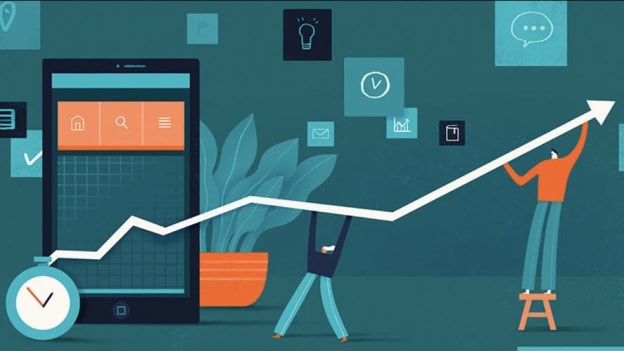Talent Technology: A path to building smarter organizations

We have all seen the way the digital revolution has marched forward, birthing companies like Tesla, Netflix, and Airbnb which have become dramatically more potent than their decades-old competitors.
What could be the reasons that are fueling growth to these companies?
Besides being customer experience-centric and building brands, if you study companies like Tesla, Netflix, Google, etc. you will find these companies are committed towards one essential fundamental of the ongoing digital transformation:
They untether the talent of their people
Empowered, autonomous teams at the edges of the organization help organizations operate at the speed of digital. They are fast, flexible and responsive. When grounded in a shared purpose, this freedom unleashes innovation, engages employees and attracts critical talent.
Creating an evolved and smarter organizations require empowered individuals. Acquiring top talent to fuel growth is one of the many ways to build a smart organization. However, to remain competitive in the current digital business landscape, buying and growing talent are not enough. HR needs more impactful ways to develop employees and talent acquisition strategies, which are responsive to the fast-evolving needs of digital business.
The shift to digital brings the new ways we ‘do’ talent management. Here are the top talent management goals for building a smarter, agile and an evolved organization:
Establishing a culture of innovation:
Where is your organization on the innovation effectiveness (IE) scale? According to Gartner, organizations with high IE are— 4.49x more likely to be ahead of peers in using data and technology. Also, these organizations are 1.64x more likely to have successful digital transformation efforts.
One of the keys to innovation is to know that while innovation starts at the top, but it is a team sport. Each person needs to feel that they matter and the outcome wouldn’t be the same without their contribution. Talent technology can help foster innovation among each person by:
- Manage ideas
- Track performance
- Improve communication
- Improve products
Adopting agile recruiting models:
Hiring the best is your most important job. -Steve Jobs
Smart organizations are the by-product of their people. However, some of the challenges faced by recruiters today include Volatility in hiring, rising time to fill positions, and unavailability of talent are some of the challenges faced by organizations. So how can HR be more than a responsive hiring service for business leaders?
To create effective teams, hire people from diverse backgrounds across genders, work experiences, socioeconomic, geographic, and familial histories and then provide them an inclusive environment where they can bounce ideas off each other. Some of the ways by which organizations can hire the right talent to build smart organizations are:
- Develop more sophisticated predictive talent analytics
- Deploy technologies like AI, ML to employ a diverse and bias-free workforce
- Invest in employee-experience and employer brand
Leveraging analytics to make better decisions:
Over the last 30 years, the volume of data and metrics available for HR to report on has increased exponentially. Besides, 70 percent of organizations expect to increase the resources they dedicate to talent analytics in the coming years. However, most companies do not realize the value from their analytics investments, with only 12 percent of organizations currently using talent data to adequately inform business decisions.
Analytics is bringing about a more holistic view of talent management. Analytics can help to make better decisions on an individual’s performance for a particular job, offers a complete analysis of an employees’ skilling and development requirements, and enable employees to perform better with the help of real-time data.
The shift from continuous to connected learning system:
Skill gaps persist despite HR’s extensive commitment to continuous learning and upskilling that is being driven by the demands of the business. According to research, the current approach to building continuous learners is decreasing skills preparedness —by as much as 22 percent.
The approach that most organizations are taking to create continuous learners is creating disconnected learners. Organizations need to adopt a more forward-looking approach- a shift from continuous to connected learning. Learning which is connected to business outcomes.
The learning eco-system has an arsenal of services- MOOCs, Video, Micro-Learning, Nano-Learning, Coaching & Mentoring, etc. Newer technologies like AI & ML, Blockchain also making their way to enhance the efficiency and effectiveness of the learning programs.
Creating an evolved enterprise requires new approaches to how we structure organizations, leverage purpose, and manage transformational change. Also, it requires understanding today’s technological innovations and leveraging it to create smarter workforce and organizations.
To know more about creating smarter organizations by keeping up with the latest technology, attend People Matters Talent Tech Evolve Virtual Conference 2019.
Grab on the opportunity to learn and network conveniently at almost zero cost at the upcoming People Matters Talent Tech Evolve Virtual Conference 2019 to be held on 27th June 2019. Click here to know more.















